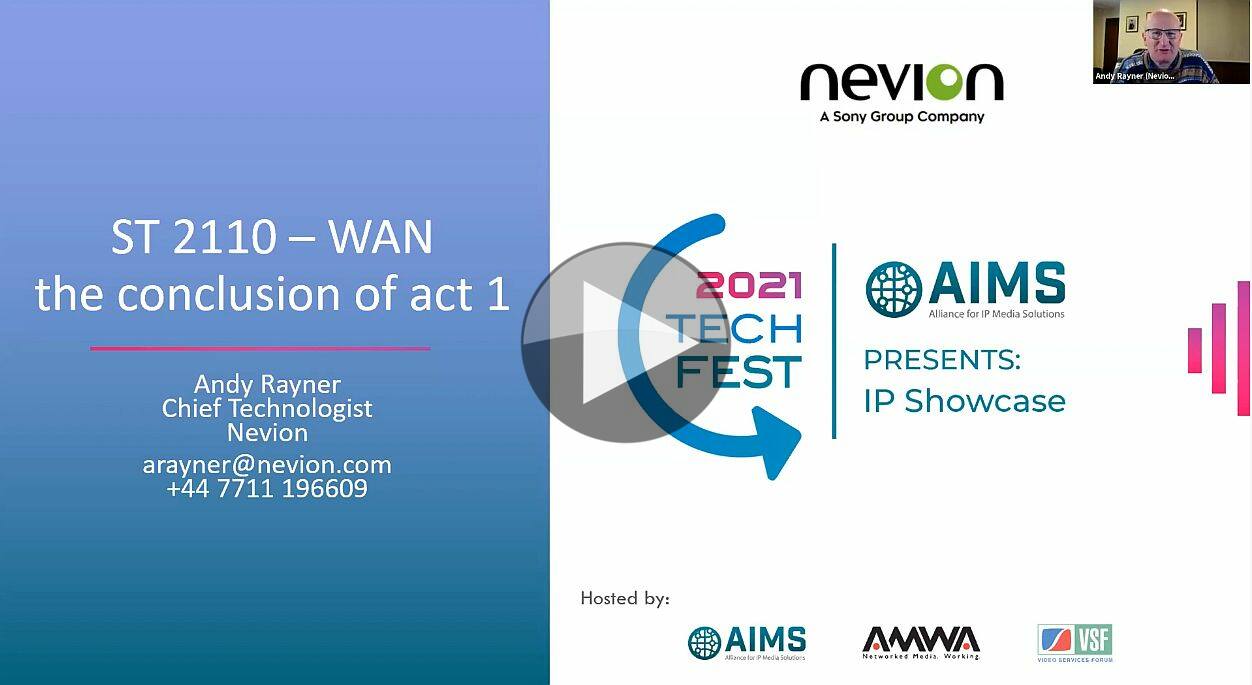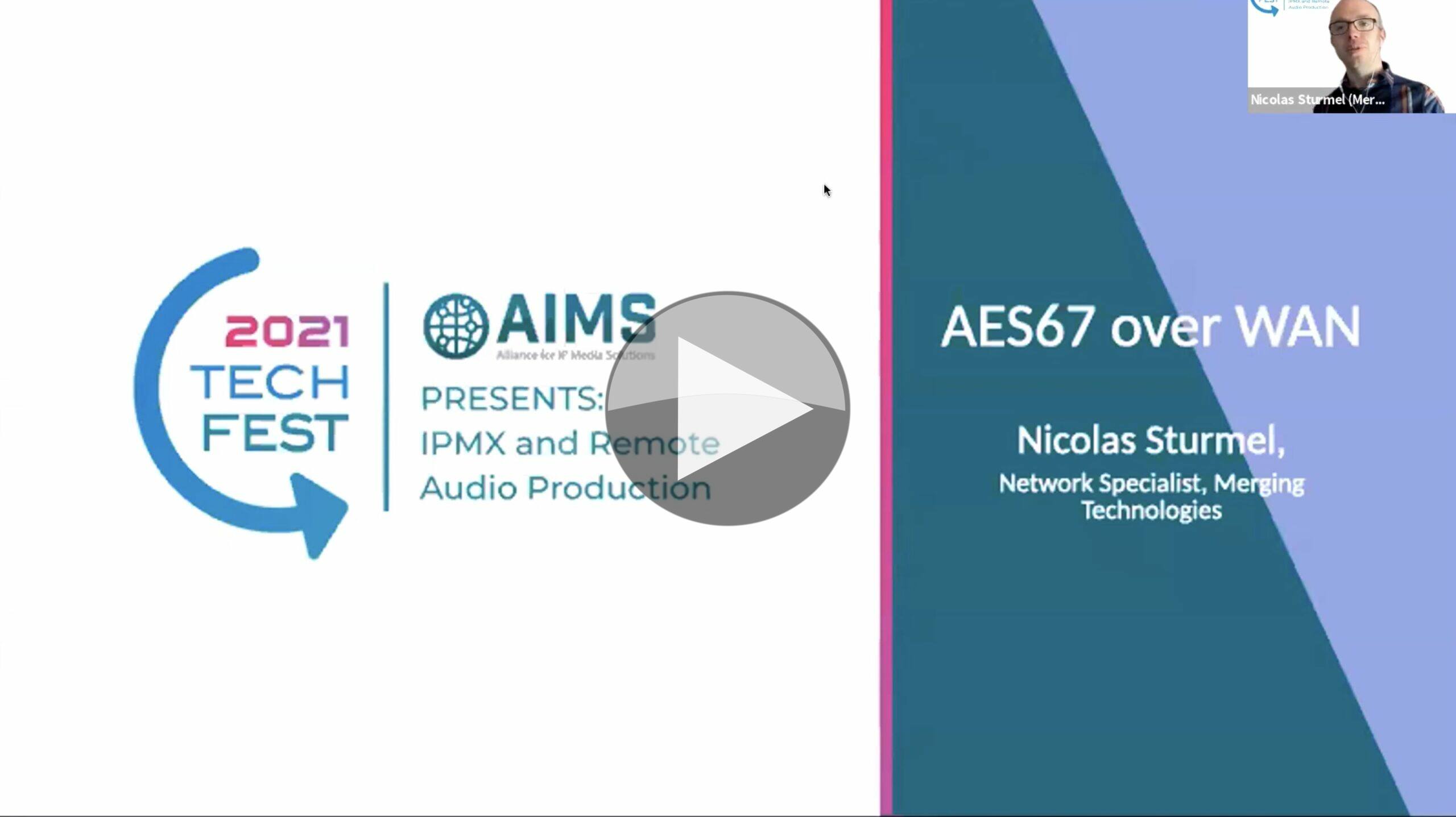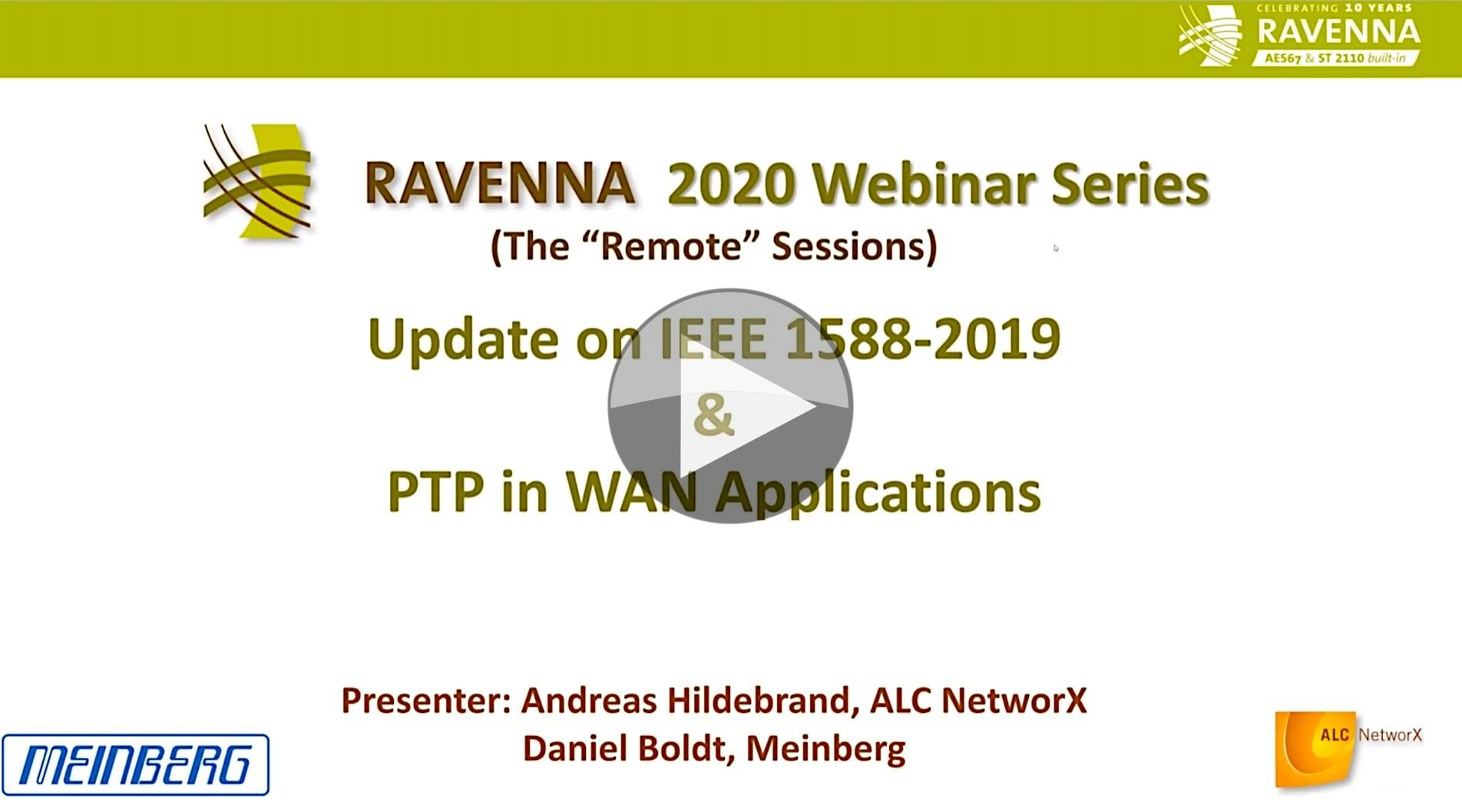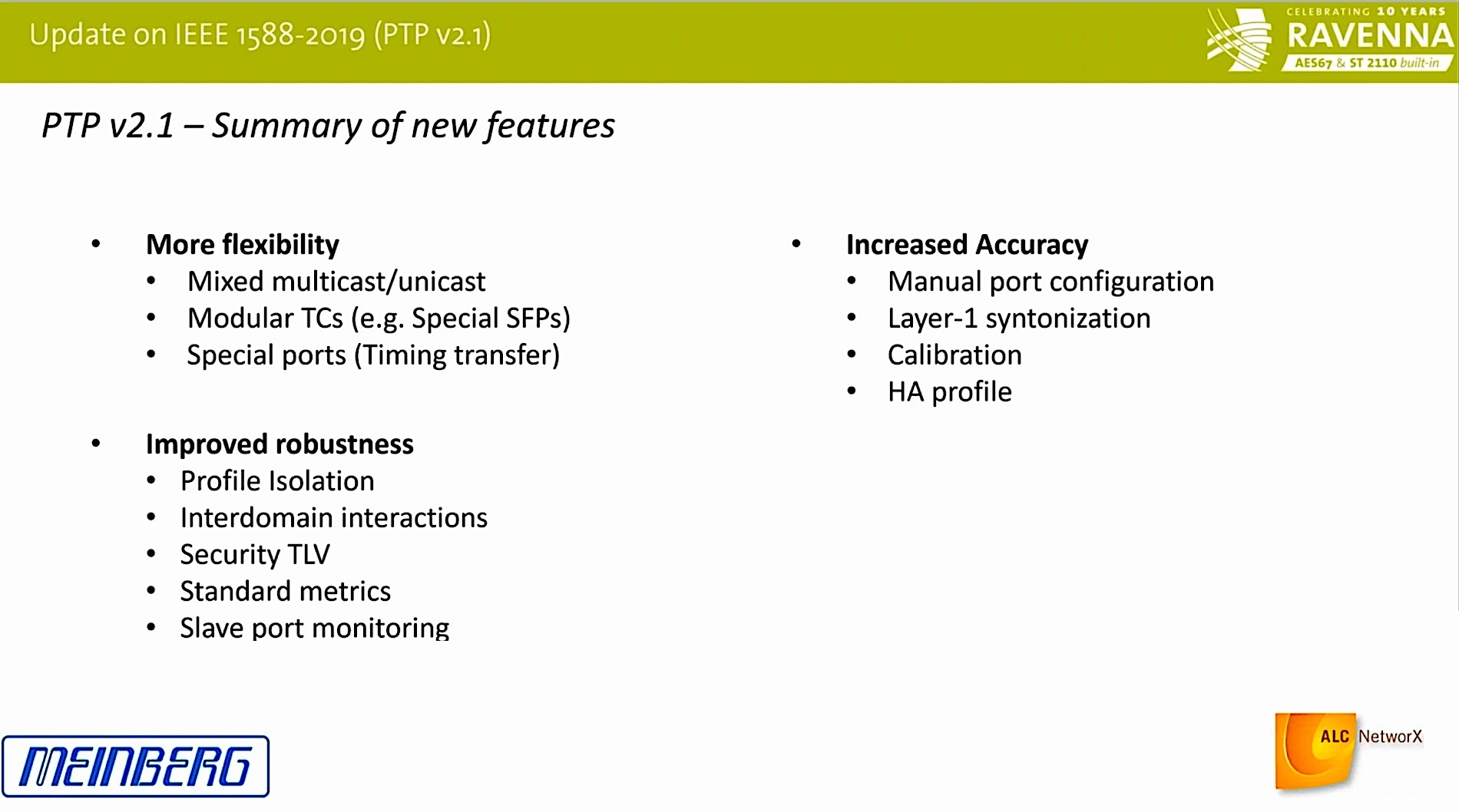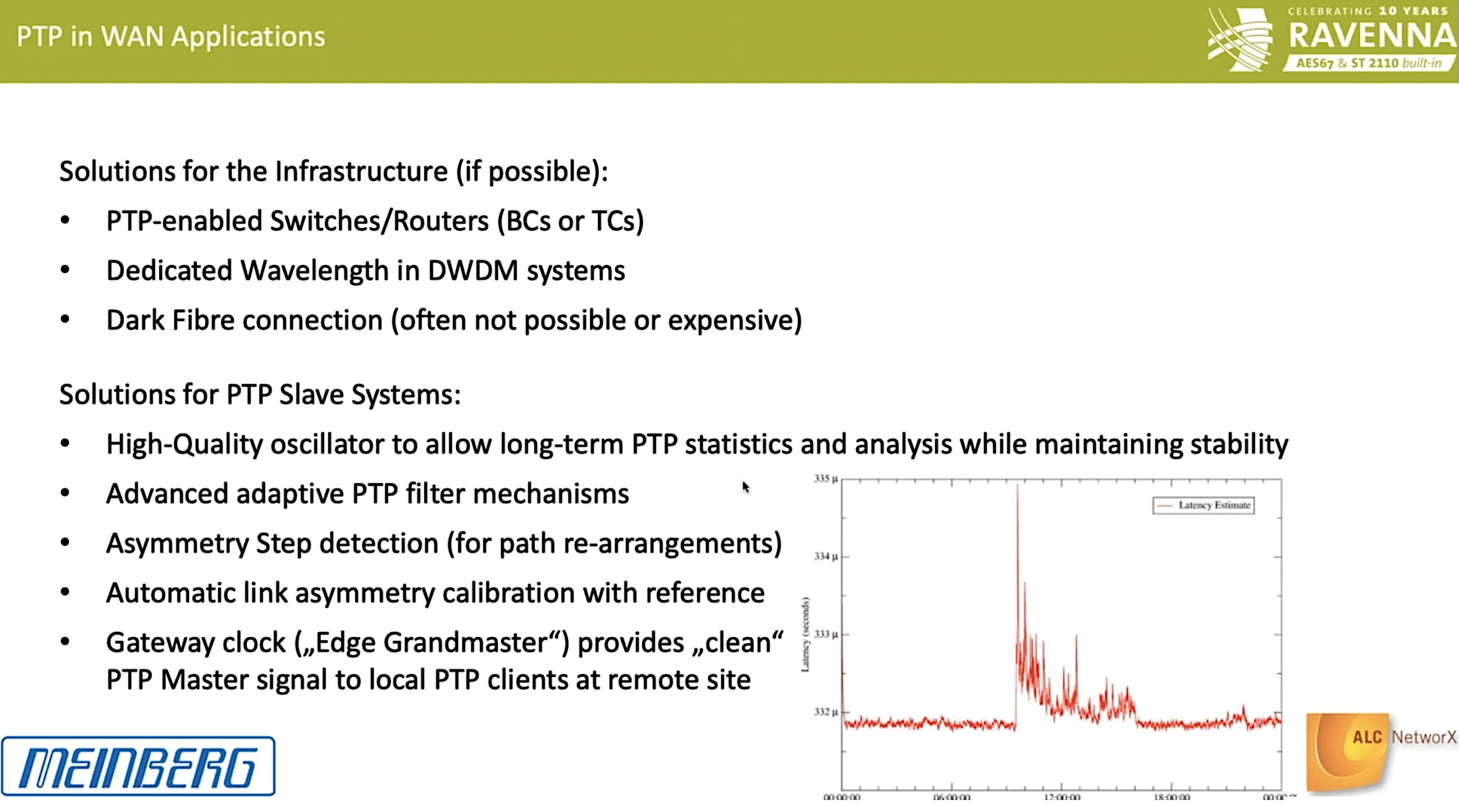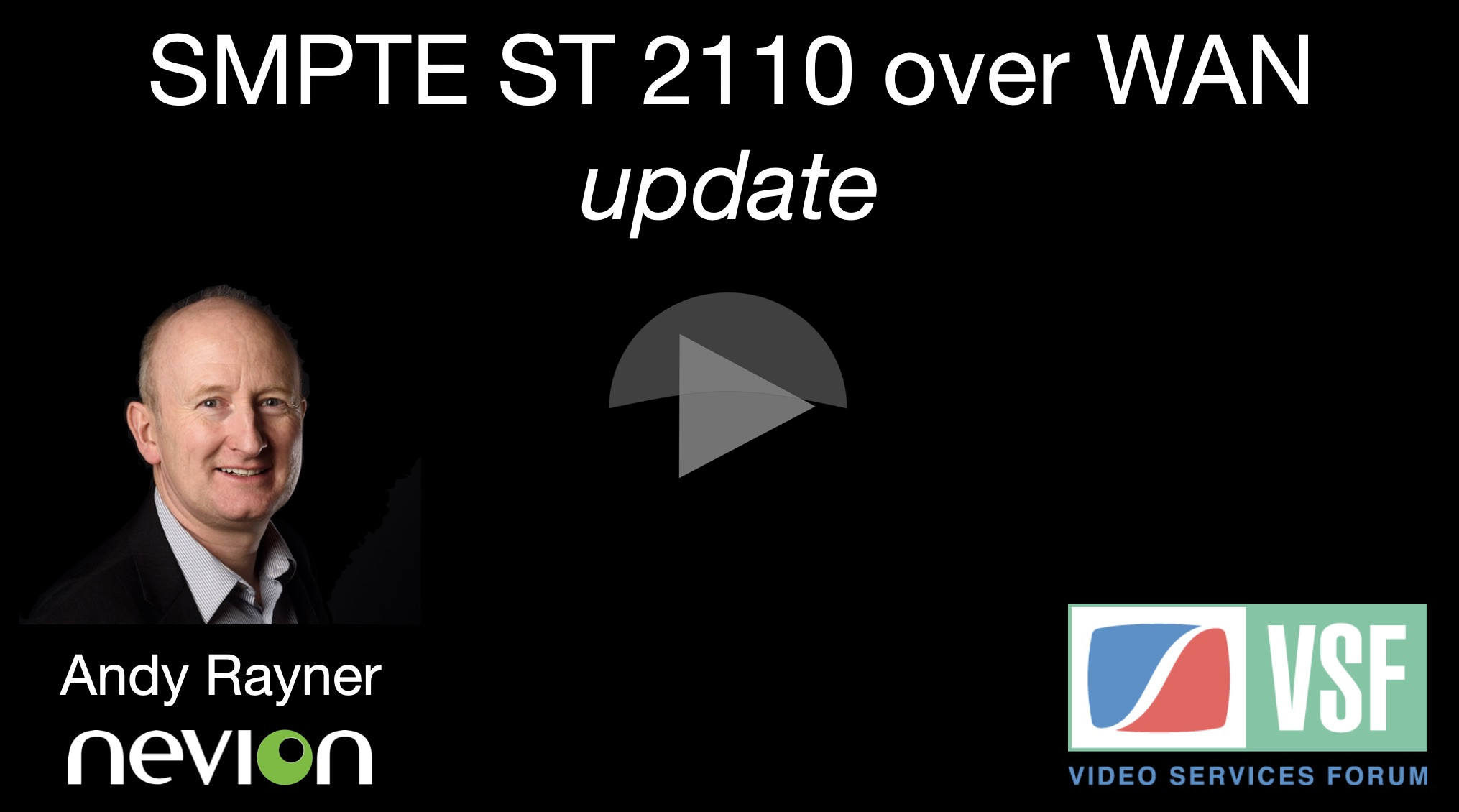Is SMPTE ST 2110 suitable for inter-site connectivity over the WAN? ST 2110 is putting the early adopter phase behind it with more and more installations and OB vans bringing 2110 into daily use yet most sites works independently. The market is already seeing a strong need to continue to derive cost and efficiency savings from the infrastructure in the larger broadcasters who have multiple facilities spread around one country or even in many. To do this, though there are a number of challenges still to be overcome and moving a large number of essence flows long distances and between PTP time domains is one of them.
Nevion’s Andy Rayner is chair of the VSF Activity Group looking into transporting SMPTE ST 2110 over WAN and is here to give an update on the achievements of the past two years. He underlines that the aim of the ST 2110 over WAN activity group is to detail how to securely share media and control between facilities. The key scenarios being considered are 1) special events/remote production/REMIs. 2) Facility sharing within a company. 3) Sharing facilities between companies. He also notes that there is a significant cross over in this work and that happening in the Ground-Cloud-Cloud-Ground (GCCG) activity group which is also co-chairs.
The group has produced drafts of two documents under TR-09. The first, TR-09-01 discusses the data plane and has been largely discussed previously. It defines data protection methods as the standard 2022-7 which uses multiple, identical, flows to deal with packet loss and also a constrained version of FEC standard ST 2022-5 which provides a low-latency FEC for the protection of individual data streams.
GRE trunking over RTP was previously announced as the recommended way to move traffic between sites, though Andy notes that no one aspect of the document is mandatory. The benefits of using a trunk are that all traffic is routed down the same path which helps keep the propagation delay for each essence identical, bitrate is kept high for efficient application of FEC, the workflow and IT requirements are simpler and finally, the trunk has now been specified so that it can transparently carry ethernet headers between locations.
Andy also introduces TR-09-02 which talks about sharing of control. The control plane in any facility is not specified and doesn’t have to be NMOS. However NMOS specifications such IS-04 and IS-05 are the basis chosen for control sharing. Andy describes the control as providing a constrained NMOS interface between autonomous locations and discusses how it makes available resources and metadata to the other location and how that location then has the choice of whether or not to consume the advertised media and control. This allows facilities to pick and choose what is shared.
Watch now!
Speakers
 |
Andy Rayner Chief Technologist, Nevion, Chair, WAN IP Activity Group, VSF |

